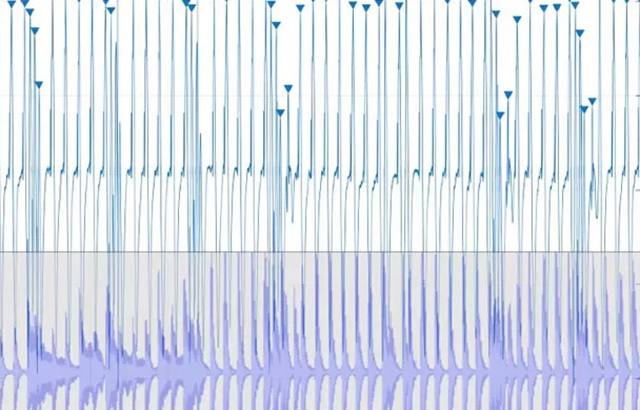The music of arrhythmia
Translating irregular heartbeats could lead to new insights for computer scientists and medical diagnostics, according to an international project led by a Professor of Digital Media at Queen Mary University of London (QMUL), which was presented today at the British Science Festival in Brighton (Friday 8 September).

The project, ‘music, computing and cardiology’ is seeking to understand whether musical representation of irregular heart beats could be used to characterise arrhythmia patterns. This could one day help discover disease subtypes and predict patient outcomes.
Turning ECG data into music
The project takes ECG data recorded from arrhythmic hearts and represents the information using music rhythm notation, which then serves as a basis for new music compositions. When performed, the music accurately reproduces the rhythms of the irregular heartbeats, demonstrating the success of the transcription.
In addition, the performed music makes the experience of arrhythmia visceral so that people who have not experienced arrhythmia can sense what it feels like. The resulting musical representations also capture temporal structures, such as rhythmic patterns and musical form.
The team, which involves three students at Harvard, Ashwin Krishna, Daniel Soberanes, and Matthew Ybarra, used electrocardiogram recordings of two types of arrhythmia: ventricular tachycardia and atrial fibrillation.
Project lead Professor Elaine Chew from QMUL’s Centre for Digital Music, part of the School of Electronic Engineering and Computer Science said, “The reason I came up with this idea is because I was an atrial fibrillation patient myself. I was about to have my ablation procedure, and when the senior registrar heard I worked in digital music, he told me about a quiz he had organised for his cardiology colleagues.
"He said he played different types of electronic music of varying tempos to them, and they had to guess the type of arrhythmia that the music most resembled. And so that got me thinking. After my surgery, I requested my own ECG data from the consultant, and started my analysis.”
The anonymised ECG data was collected at the Barts cardiac catheterisation laboratory with the help of Professor Pier Lambiase, consultant cardiologist at Barts and Professor of Cardiology at UCL, and Dr. Michele Orini, a bioengineering research fellow at UCL.
“Deep dive into heartbeats”
Existing projects linking heartbeats to music focus on normal heartbeats, which may change in rate but have little rhythmic variation. These projects are also based primarily on sonification of aggregate features such as rate or frequency.
She added, “Our unique approach of deep-diving into the temporal structure of electrocardiograms – rather than current methods, which focus on the shape and form of individual beats or heart rate variability features – reveals complexities otherwise hidden in frequency-based approaches.”
The richer detail afforded by music representations has the potential to influence medical diagnostics, for example, providing new biomarkers for risk.
An intermediate output is the Arrhythmia Suite, a set of piano pieces based on collaging existing music material that possess matching rhythms or similar ones that match the heartbeats with only minor modifications.
Watch ECG recordings of cardiac arrhythmias transcribed to music notation:
Collaborating with Harvard
The research project ‘music, computing and cardiology’ was funded in part by a summer research fellowship at Harvard University’s Radcliffe Institute for Advanced Study. The project was motivated by Chew’s own experiences with arrhythmia, and was sparked by a story of a musical quiz where cardiologists had to guess the arrhythmia based on the tempo of musical excerpts.
Professor Chew is both an established musician (pianist) and a leading authority in music representation, music information research, and music perception and cognition.
Cardiac arrhythmia afflicts over two million people in the UK alone. Caused by faulty electrical wiring in the heart, these heart rhythm problems lead to symptoms ranging from the benign to deadly.
More information:
- Find out more about studying Sound and Music Computing MSc degree and MEng in Electronics with Music and Audio Systems at QMUL’s School of Electronic Engineering and Computer Science.
Related items
For media information, contact:


